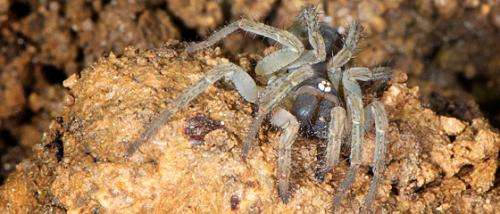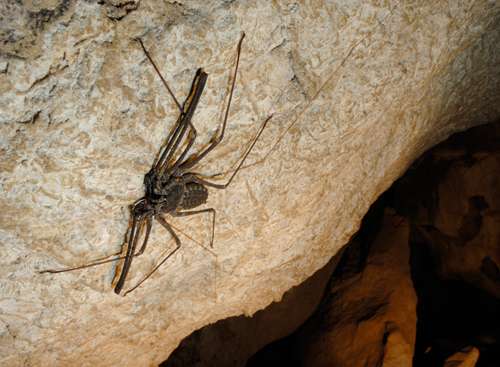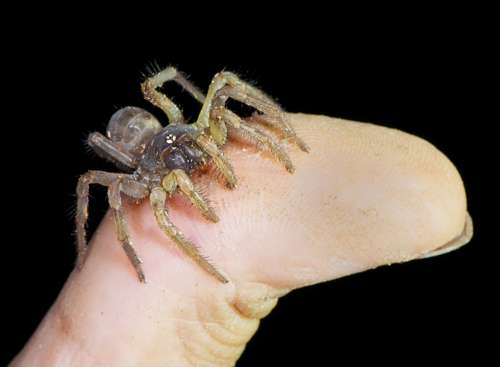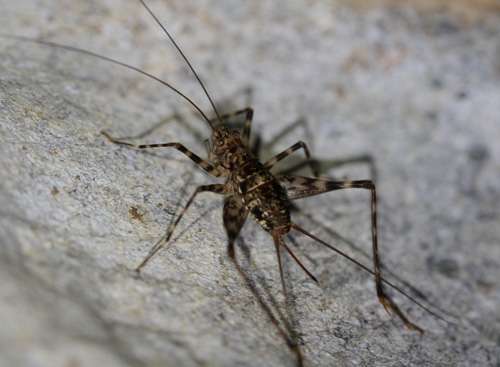Rare and often-overlooked species found only in limestone ecosystems get a conservation boost

A new report by Fauna & Flora International (FFI) and three other conservation organisations calls on companies and regulators in the extractive industry to safeguard biodiversity found only in limestone areas.
Limestone – used worldwide as a building and ornamental stone and as an essential ingredient of cement – is essential to major infrastructure projects, from dam and bridge construction to road-building and port development. It is one of the building blocks of development and economic growth, but its extraction risks harming species we don't even understand yet.
In tropical and temperate regions alike, limestone areas are home to unique ecosystems (such as caves) that support a diversity of bat, snail, orchid, fish, spider and beetle species found in no other habitat on earth. Some cave species, like the blind water mite FFI discovered on Vietnam's Cat Ba Island in 2013, are so highly adapted to life in darkness that they cannot survive in other habitats.
Understudied biodiversity and overlooked threats
Limestone quarrying – the process of extracting the valuable rock from the ground – is one of the primary threats to biodiversity found only in limestone areas.
"Some limestone habitats, such as caves, form through natural processes over millions of years and are often impossible to restore once damaged," explains Dr Tony Whitten, Asia-Pacific Regional Director at FFI.
But in some cases, we may not even know what species are being lost. "Biodiversity in limestone areas is some of the most challenging to study due to the simple fact that it's tough to access," says Tony. "It's often the first to be overlooked by governments, companies and scientists and the last to be included in national or regional biodiversity surveys."

An even bigger challenge is that many limestone species are confined to very small areas – in some cases a solitary hill or cave. For these species, a single extractive operation, quarry or poorly-planned blast can lead to a global extinction.
Urging industry to step up
Acknowledging the rapidly increasing problem of limestone extraction, FFI, BirdLife International, IUCN and WWF have produced a joint briefing paper, Extraction and biodiversity in limestone areas, calling on scientific, regulatory and business communities to raise the profile of limestone-restricted biodiversity.
The paper urges operators of new and expanding limestone quarries to avoid key habitats such as caves and isolated limestone hills and restrict extraction to only a portion of a limestone area to reduce the chances of causing species extinctions.
It also encourages industry associations and regulators to help map critical areas for preserving limestone-restricted biodiversity to inform strategic planning and better coordinate the location and management of sites operated by different companies.
FFI's work on limestone biodiversity

FFI is working to conserve limestone areas in China, Indonesia, Vietnam and Laos, to ensure that their incredible biodiversity value is recognised alongside their economic potential.
This work includes protecting limestone ecosystems in China's Guangxi Province by educating and training government and society on limestone landscape management, and working with Holcim (a leading cement and aggregates supplier) in Indonesia to examine the impacts of their quarry and broader management issues for the 11,500 hectare limestone prison island of Nusa Kambangan, off the south coast of Java.
Through work with Holcim Indonesia, we discovered 40 species new to science and developed a management plan which is now being implemented by the company within and around its mining zone.

IUCN's Species Survival Commission has also formed a Specialist Group for Cave Invertebrates. Co-chaired by FFI's Tony Whitten and Louis Deharveng from the National Museum of Natural History in Paris, the group is dedicated to conserving cave invertebrate fauna.

"Limestone quarrying is essential for economic and development purposes, but could be responsible for more species extinctions – past and future – than any other sector. If done right there are big opportunities for operators, associations and regulators in the extractive sector to safeguard biodiversity and make high-profile contributions to conservation," says Tony.
More information: The briefing paper, "Extraction and biodiversity in limestone areas," is available online: www.fauna-flora.org/wp-content … iversity-Final-3.pdf
Provided by Fauna & Flora International



















